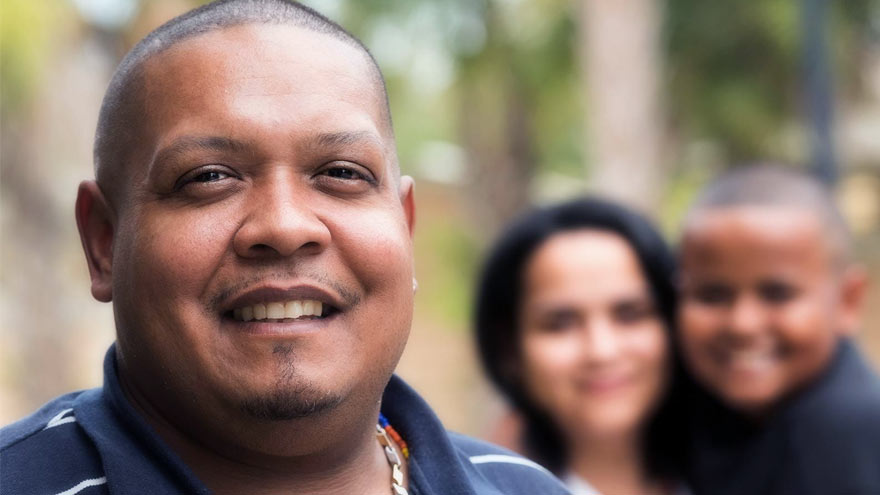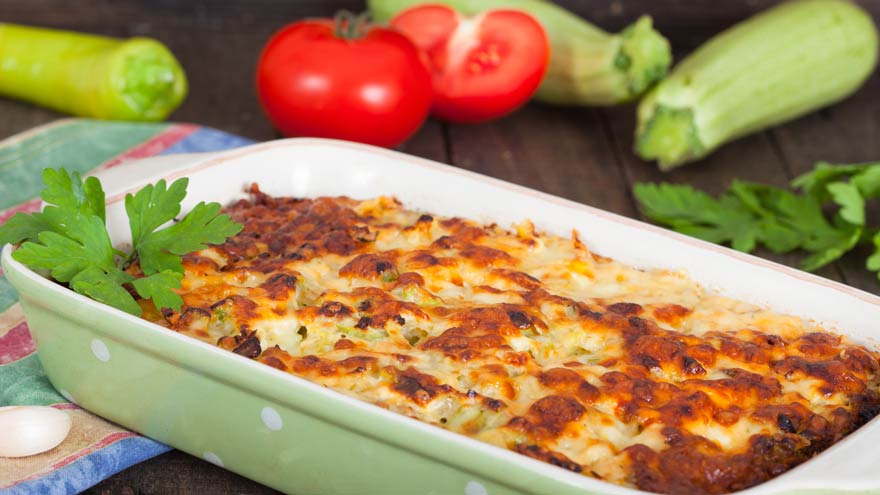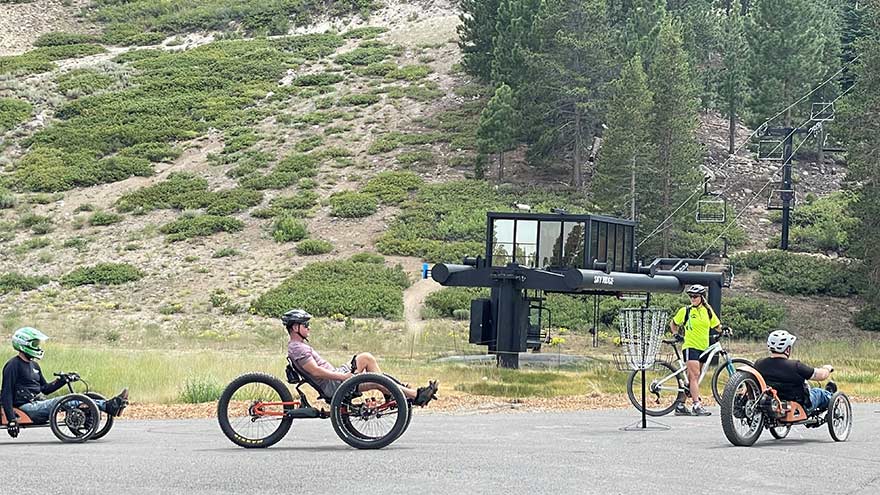Search
Results for 'what is an'
Clear-
Pool Safety: Things To Know About Drowning
The warm weather is here and pools are open. Swimming is a great way to keep your kids cool, occupied and exercised throughout summer, however pools come with their fair share of risks. Before you take your children swimming, check out these pool safety tips. Pool safety is something every parent needs to take more seriously. Why? Because drownings of young children ages one to four have increased in recent years. Unfortunately, drownings are the number one cause of death in this age group - we lose the equivalent of 10 school buses full of children to fatal drownings in the U.S. each year. With warmer temps and hopes of cooling off in a local pool, you can’t be too careful when it comes to protecting your children from the risk of drowning. Children are naturally drawn to water, so parents must be extra aware in order to protect their kids from diving in headfirst. Kris Deeter, MD, pediatric intensive care physician at Renown Children’s Hospital, offers tips to keep your littles safe in the water. Preparing Your Child for the Pool People aren’t born knowing how to swim. This means parents must teach their children about swimming and pool safety if they want them to be safe and confident around water. It can take years to develop these skills, so the key is to start when your children are very young. Here are some ground rules: Teach your child to swim starting at age one. We recommend enrolling your toddler in swim classes; there are several organizations in the Reno-Tahoe area that offer baby and toddler swim classes. Keep your kids away from plastic and inflatable pools - they’re easy for children to fall or climb into and drown. They’re also a breeding ground for bacteria. Floaties and water wings are not safe! They are not a safe substitute or “crutch” for learning how to swim and they can lead to drowning if the child is using them incorrectly or while unsupervised. Stay within arm’s reach of babies and toddlers when at the pool. Supervision alone is not enough – you must be within arm’s reach in case they fall in and need to be rescued quickly. Learn child and infant CPR. If a drowning does occur, the best course of action is to call 911, get the child onto dry land and conduct CPR until breathing is restored or the EMTs arrive. Pool Parties: A Risk for Drowning? Surprisingly, pool parties, a common summer pastime, actually increase the risk of drowning incidents. Although responsible adults are usually at pool parties, distractions ranging from alcohol to pool toys can actually make it easier for drownings to occur unnoticed. Does this mean you should RSVP “no” to the next pool party your child is invited to? Not if you follow the pool safety tips below: Attend the party with your child so you can supervise them while they swim. Remove unused floaties and toys from the pool. They can obscure visibility, making it difficult to see a child in the pool. Don’t drink alcohol while supervising a pool party. Assign an adult “water watcher” to pay constant attention to children in the pool. Pool Safety Precautions for Homeowners If you own a pool, there are several more precautions to ensure the safety of your children. Even if your kids are strong swimmers who have mastered the rules of pool safety, there may be neighbors or friends who are younger and more vulnerable to drowning. You must undertake precautions for these children too. Some of these may seem time-consuming or expensive, but they are worth it to prevent a child from a fatal drowning. To keep your pool or spa safe, please: Cover your pool or spa when not in use. Choose a pool or spa cover with safety features like locks, safety sensors or alarms. Fence in your pool or spa area. The fence should be locked and at least four feet tall. Do not leave toys in the pool area as these may attract children.
-
Low Back Pain – How to Stop the Ache
Low back pain is not only a problem most people have at some point in life, but also the leading cause of disability in the U.S. Whether it is a sharp spasm from lifting something heavy or a daily constant ache, there are various treatments available to relieve your pain. Jessica Ryder PT, DPT, cert VRS, with Renown Health Outpatient Therapy, explains some common causes of this pain, how to treat it and ways to prevent pain flare-ups. It’s important to realize most cases of low back pain are short term. Frequently lasting only a few days or weeks. In general these cases leave no long-term damage to the spine, muscles, discs or nerves. “However, it can become episodic or chronic (lasting longer than 12 weeks) if it is not properly understood or managed by the individual, ” cautions Ryder. Causes of Pain Specifically back discomfort can be related to: Wear and tear on the spine due to age or poor movement patterns Injury to spinal discs Sprains (overstretching or tearing of ligaments) and strains (tears in tendons or muscles) Trauma Irregularities of the spine present at birth (example: scoliosis)Notably the above issues may result in a “pinched nerve” or sciatica, causing pain to extend down the leg. Risk Factors for Pain In particular, your chance of developing low back pain increases with the risk factors below: Age Being overweight Low fitness level or occasional physical activity (“weekend warrior”) Family history Pregnancy Poor posture Jobs requiring heavy physical work (landscaping, plumbers, construction, etc.)
-
Is Bariatric Surgery Right for You?
You’ve likely heard about bariatric surgery — and perhaps even have friends who’ve done it. But is it a potential solution for you? Here, Dawn Remme, RN, Metabolic Bariatric Surgery Program Manager, provides insight. You may have been struggling with excess weight for years. You’ve tried high-protein diets, low-carb diets and more. Most patients considering weight loss surgery have tried numerous dieting methods. The truth is, some patients who suffer with obesity are successful dieters. Unfortunately though, excess weigh often returns. This impacts their health and the quality of their life. It can be a disheartening battle. Weight loss surgery is a big decision. In making this decision, keep in mind that surgery is only one step toward your goal of achieving better health. It is neither magic, nor is it the “easy way out.” Weight loss surgery can offer you a TOOL to help you become more successful in controlling the disease of morbid obesity. By combining this tool with a lifelong commitment to important lifestyle changes, medical follow-up and nutritional modifications, you have the potential to become a healthier you. Bariatric Surgery By the Numbers Exploring the facts about obesity, how it impacts your health, and how surgery can resolve or significantly improve your chronic medical conditions is the first step to making a decision. Obesity is medically defined as “excess body fat” and is measured by a mathematical ratio known as the Body Mass Index (BMI). To calculate your BMI, we consider your height, weight, age, gender and body build. Here are the standards: “Normal” BMI: less than 25 Overweight: 25 – 29.9 Obese: BMI of 30 – 39.9 Morbid obesity: BMI of 40 or more Morbid obesity (BMI over 40) is a lifelong, progressive disease, and the prevalence of morbidly obese Americans (100 or more pounds over a healthy weight) is increasing rapidly. According to the CDC, the disease of obesity affects 78 million Americans. Further estimates indicate about 24 million have morbid obesity. Serious medical problems known as co-morbidities often occur when someone is morbidly obese. Studies tell us conditions such as type 2 diabetes, high cholesterol, sleep apnea, high blood pressure and degenerative arthritis increase in severity as the BMI is increasing in patients. When may weight loss surgery be an option? When someone has a BMI greater then 40. If a person’s BMI is 35 – 39.9 and they have significant health problems such as type 2 diabetes, high blood pressure, high cholesterol, sleep apnea, or other diagnosed health conditions related to obesity. Gastric Sleeve, Gastric Bypass Explained To resolve or significantly reduce these health conditions, bariatric surgery can be done when diet and exercise haven’t worked. Weight loss surgery makes changes to your digestive system to help you lose weight. The gastric sleeve limits how much you can eat, whereas gastric bypass limits how much you can eat and reduces the absorption of certain nutrients. Other Benefits of Surgery You can greatly increase life expectancy by resolving or significantly improving conditions like diabetes, high cholesterol, high blood pressure, sleep apnea, and obesity itself. Infertility can also be positively affected. A significant weight loss and relief from serious health conditions and diseases will greatly improve your quality of life. Studies tell us that type 2 diabetes is resolved or significantly improved in 84 percent of patients following bariatric surgery. Cholesterol levels dropped in 95 percent of patients. And hypertension and sleep apnea showed improvement in 68 and 80 percent of patients, respectively, following bariatric surgery. Bariatric Surgery at Renown In making the decision to move forward to better health, it is important to remember: Obesity is a disease, and the desire to have a healthier, longer, more fulfilling life is possible. If you are interested in learning more, please visit the Bariatric Surgery Program page to view more information about Renown Regional Medical Center’s MBSAQIP accredited bariatric program, as well as information about upcoming educational seminars. Or call 775-982-RSVP (7787) to reserve your seat. Learn More
-
Dietitans' Top Advice to Avoid Holiday Weight Gain
The weight gain struggle is real with tempting holiday celebrations and treats. It’s hard to focus on nutrition with social events, shopping and a hectic schedule. And no one wants to diet during the holidays. Renown Health Registered Dietitians Kim Colegrove and Bristy Zimmerman, share their tips below for enjoying the holiday season without packing on extra pounds. Your holiday nutrition strategy doesn’t have to be all or nothing. Instead, Colegrove and Zimmerman emphasize realistic approaches to keep weight gain in check during the holidays. Plan Ahead to Avoid Weight Gain “Thinking ahead is key for staying on track with your weight and health goals,” says Colegrove. “Arranging to have a healthy snack ahead of time is a good idea to avoid overeating at parties. You could also bring a healthy dish to the party, then you know there’s at least one option that will fit into your meal plan. Or you might also think about eating some of your favorite party foods, but then consider the rest of your week and balance it out accordingly. All foods can fit! It’s all about balance and portion control.” Keep Moving Your Body Colegrove also urges us to stay active. “There are so many benefits of exercise! Besides aiding in weight management, physical activity can boost our mood and help us to cope with stress. For many, the holidays can be a very busy and stressful time, which may contribute to overeating and weight gain. So keep up the routine! Exercise is a vital tool in maintaining weight and managing stress, especially during the holiday season.” Slow Down and Be Satisfied “Slowing down at any meal, including the holidays, can help us pay attention to our satiety or fullness cues,” encourages Zimmerman. “Try putting your fork down between each bite of food, focus on chewing eat bite thoroughly and stop eating when you feel satisfied rather than eating to the point of discomfort.” Divide Your Plate to Conquer Weight Gain Traditional holiday foods tend to be high in calories from added fat and sugar, so it’s extra important to be mindful of our portions. Zimmerman suggests an easy visual cue. “First, try filling half of a 9-inch plate with lower-calorie foods like non-starchy veggies or salad. Secondly, fill a quarter of your plate with a meat or protein-rich food. Then save the remaining quarter of your plate (about the size of your fist) for the higher-calorie carbohydrate foods like mashed potatoes, stuffing, or cornbread. If you want to enjoy several of these foods, just make the portions small enough to still fit in that quarter of your plate.” Liquid Calories Count “Still or sparkling water will always be the best beverage choice when avoiding weight gain,” advises Zimmerman. “If you really enjoy holiday beverages, try modifying your favorite recipes by using low-fat milk or alternative sweeteners. Be mindful that calories from sweetened beverages and alcohol can add up fast. For example, if you usually enjoy several drinks at a holiday party, even reducing from three drinks to one drink can save significant calories.” You can set yourself up for success in the new year by having an eating game plan. “It’s important to be realistic about the holidays. They only come once a year, and they should be enjoyed! But plan ahead and find a good balance,” urges Colegrove. “Going into the holidays, it’s important to anticipate temptations and be prepared at social events. Don’t let the holiday season derail your efforts and enjoy in moderation!”
Read More About Dietitans' Top Advice to Avoid Holiday Weight Gain
-
Grief and Bereavement Resources
Feelings of grief can take on many forms and can occur in reaction to many situations, including the death of a loved one or a medical diagnosis for yourself or someone close to you. It is important to remember that this reaction is entirely natural, and many people who experience grief find outside help to be a valuable part of the healing process. Below is a list of both local and national grief and bereavement resources for all ages and specificities. If you or someone you know is experiencing grief, the trained professionals below are here to help. Solace Tree Support groups for children and teens (ages 3 to 18), young adults and their family members. For more information visits solacetree.org/grief-programs or call 775-324-7723. Healing Minds Counseling services for those coping with the loss of a loved one or major life change. For more information visit healingminds.com/grief-counseling-reno-nv or call 775-448-9760. Circle of Life Hospice Support groups open to the community held the first and third Tuesday of every month. Fore more information visits colhospice.com/bereavement-and-spiritual-care or call 775-827-2298. Summit View Hospice Grief and bereavement support open to the community-groups, memorials and by mail. For more information visit summitviewhospice.com or call 775-636-9598. The Compassionate Friends Monthly support group on the second Monday of each month for families after a child dies. Fore more information visit facebook.com/TheCompassionateFriendsofReno, compassionatefriends.org or call 775-750-7005. Healing for Survivors of Suicide Links and resources for those who have lost a loved one to suicide. For more information visit survivingsuicide.com GriefShare Grief recovery support groups meeting weekly both in-person and online with options in Reno/Sparks, Carson City and rural cities. For more information www.griefshare.org National Alliance for Grieving Children Resources for parents and caregivers to help children navigate the challenges of bereavement and grow into healthy adults. For more information visit nacg.org/resources-and-support/ Mourning Hope Grief Center Grief support groups, counseling, resources and COVID-19 support for children, adults and families before and after a death loss. For more information visit mourninghope.org Crisis Support Services of Nevada 24/7, free, confidential and caring support to people in crisis across Nevada and the U.S. For more information visit cssnv.org, call 775-784-8090 or text CARE to 839863 National Alliance on Mental Illness-Warmline A stigma-free, non-crisis phone service you can call or text that is staffed by trained peers in recovery. For more information visit namiwesternnevada.org/resources/ or call 775-241-4212. Vitas Healthcare Grief and bereavement resources and support groups both virtual and phone-in. For more information visit vitas.com/family-and-caregiver-support or call 866-489-0583. St. Mary’s - Hospice We Promise Resources on grief for all groups including children to adults, trauma, caregivers and more. For more information visit hospicewepromise.com/topics/grief or call 775-525-6700. Mountain View Mortuary Grief support and tools available to assist you in your healing journey including “365 Days of Healing” email list for daily support and comfort. For more information visit mountainviewmortuary.net/resources/grief-support or call 775-788-2199 Sesame Street – Helping Kids Grieve Discover games, videos and more on topics important to you and your child. For more information visit sesamestreetincommunities.org/topics/grie Trauma Intervention Program-Northern NV A national non-profit organization of volunteers dedicated to ensuring those emotionally traumatized receive assistance. For more information visit tipnnv.org/about-tip/resources Pregnancy & Infant Loss Support Organization A non-profit organization dedicated to the support of families who have lost a baby through miscarriage, stillbirth or neonatal death. For more information visit pilsos.org Caring Info A program of the National Hospice & Palliative Care Organization providing free resources to help people make decisions about end-of-life. For more information visit nhpco.org/patients-and-caregivers/
-
Women and Stroke Surprising Signs to Know
Stroke is unfortunately common, with 1 in 5 American women experiencing it each year. When it comes to a stroke the phrase “time is brain” speaks to the urgency of getting rapid care. In fact, a woman may lose nearly 2 million neurons per minute of oxygen loss to the brain. The Renown Health Comprehensive Stroke Center experts share the importance of timely treatment and how stroke symptoms can differ in women. Women and Stroke – Surprising Symptoms Each year stroke affects more women than men. Even more concerning, women are less likely to recover from a stroke. The following non-traditional, less common, warning signs can be common in women: Hiccups with chest pain Sudden disorientation, drowsiness, confusion or a general altered mental status Nausea or vomiting A sudden headache that feels like the ‘worst headache of your life’ Unusual chest pain (especially with hiccups) Body numbness or weakness, such as an arm or leg suddenly ‘falling asleep’ Fainting or loss of consciousness Stroke Diagnosis The first step is neuroimaging by CT scan. This allows for rapid identification of any bleed, and also assists in determining candidacy for the early clot busting medication. MRI brain imaging is much higher resolution, and can better determine the core stroke size, assisting in prognosis and recovery. Since strokes have several different origins, an inpatient workup is essential to determine the underlying cause. Whether the stroke is secondary to plaque in the large vessels, clots being thrown in the setting of atrial fibrillation (an abnormal heart rhythm), or small vessel disease from years of uncontrolled vascular risk factors (high blood pressure, smoking, high cholesterol, diabetes), determining the cause is essential to implementing a management plan to reduce risk for further strokes. Quick Treatment for Stroke is Key Early recognition of stroke symptoms and seeking prompt attention is paramount. There are interventions that can be instituted to minimize the stroke and increase likelihood of recovery, but only if a patient presents to the hospital early. A clot busting medication, called tPA, can be given to patients with stroke if given within 4-5 hours from time of onset. Renown Regional Health Center is designated as a Comprehensive Stroke Center, the highest level of stroke certification available. To earn the designation of comprehensive stroke center, a hospital has to meet stringent requirements, including biannual on-site evaluations. This includes care for ischemic stroke patients (lack of blood flow), hemorrhagic stroke patients (bleeds), and determining the underlying cause to guide secondary stroke management prevention. Stroke Symptoms Remember “B.E.F.A.S.T.” to recognize the symptoms of a stroke below: B – Balance Being off balance or dizzy, is common. E – Eyes An eyesight change such as blurring or double vision may occur. F – Face droop One side of the face, or lip, droops A – Arm weakness Does one arm drift down? S – Speech Talking may slur or sound strange. T – Time Time to call 911. Call an ambulance immediately if you or anyone else, experiences any of these symptoms.
-
Healthy Zucchini Manicotti
Often, when we think of Italian dishes, we think of pasta. In fact, there are more than 600 different pasta shapes, each holding the task of delivering Italy’s flavors. While we all crave pasta, according to the U.S. Department of Agriculture (USDA), a cup of pasta shells contains about 166 calories, 6 grams of protein and 32 grams of carbohydrates. When you add all the other comforting ingredients that comes with cooking Italian, it’s nearly impossible to keep it healthy. Caitlin Bus, Registered Dietitian with the Renown Healthy Heart Program shares a healthier version of an Italian favorite –deconstructed manicotti using zucchini as a substitute for noodles. If you’re looking for a healthier Italian dish and wondering how to use a spiralizer to turn vegetables into noodles, this recipe is for you.
-
Take Charge of Your Sexual Health
Much like general physical and mental health, sexual health is an essential aspect of your overall well-being. Therefore, educating yourself on your sexual health is an important piece regarding your overall wellness. Secure & Private Virtual Visits Did you know that many sexually transmitted disease appointments can happen virtually, in the privacy of your own home? Our providers can perform a screening examination for sexually transmitted illness (without symptoms) when it’s convenient for you. This is a great option if the topic makes you uncomfortable during an in-person visit, or if you can’t find time to visit your primary care provider or local urgent care. After the telehealth appointment, your provider will determine the next steps for you. Remember, in-person visits are always an option as well. Here’s how you can take charge of your sexual health: Get Comfortable with Getting Tested Surprisingly, some people with STDs don't show symptoms, meaning they may not even know they have an STD unless they get tested. Even if an STD shows no symptoms, the result of non-treatment can be serious. Bret Michael Bellard, MD, with Renown Medical Group, shares that it’s important for people to get tested for STDs because if left untreated, they can cause the following health problems: Loss of fertility Pregnancy complications Other health issues When to Visit Your Primary Care Provider Who should get tested and how often? “The recommendations are that everyone from ages 13 to 64 should get tested at least once for HIV. All sexually active adults should also be tested for other STDs once a year, and all pregnant women should be tested at the start of their pregnancy,” says Dr. Bellard. Some STDs, like syphilis, can be passed from mother to baby, so it's important for women to get tested as soon as they know they’re pregnant. Dr. Bellard recommends going to your primary care provider for testing. “They can also give advice on prevention and other health topics.” If you don’t have a primary care provider, this is a great reason to get established with one. Women with an established OB/GYN can have STD testing done simultaneously with their annual pelvic exam. The providers in Renown's network care for patients of all ages and specialize in family medicine, internal medicine, pediatrics and OB/GYN. Practice Safe Sex STDs are preventable. Practicing safe sex and getting tested routinely are your best defenses against all types of STDs. For many, the conversation about sexually transmitted diseases is awkward and many avoid it. To lower your risk of contracting an STD, don’t wait until you’re “in the moment” to have the conversation with your partner about the last time you were both last tested. If you haven’t gotten tested in-between new partners, use latex condoms every time you have sex until you are both confirmed negative of STDs. Condoms are not 100% effective at preventing disease or pregnancy. However, they are extremely effective if used properly. To establish Primary Care, visit renown.org/virtualvisits or call 775-982-5000
-
Renown Hosts Adaptive Sports Day for All Abilities at Sky Tavern RASE Event
Despite the challenges of a pandemic, the Renown Rehabilitation Hospital continues to help their patients thrive outside of the hospital walls. On July 31, 2021, they hosted the first-ever Renown Alumni Sports Extravaganza, or RASE, a day focused on adaptive sports for all abilities. “Sports and recreation have a unique way of breaking down emotional barriers,” states Jared Worchel, DO, MS. The alumni used their skills on a climbing wall, Frisbee golf, archery, an obstacle course and bag toss. Over 20 people spent the day cruising the first adaptive mountain biking trail in the Tahoe region. “Having old friends meet up and seeing new friendships form had to be the highlight of the weekend,” says Shaun Stewart Certified Therapeutic Recreation Specialist (CTRS) with Renown Rehabilitation Hospital. “RASE was a great way to learn new methods to improve outdoor recreation engagement from both participants and the many programs involved.” Dr. Worchel agrees, “The smiles really make it worth it, and we even saw several touching moments with tears of joy when participants completed a task and finally felt like they were getting past their injury, mentally, after years of being so focused on recovery.” Adaptive Climbing and Camping One touching moment came on the adaptive climbing wall. Cassie Firchau, an occupational therapist at Renown, recalls a rehab alumni who had never been on a climbing wall (pre or post injury) conquering the wall. “Everyone was cheering him on. I was impressed with how he used the ascending pull up bar to get up the wall,” she remembers. Mark Wellman, the founder of No Limits, provided the climbing wall. “I had heard of Mark, but I had no idea that he climbed El Capitan only a few years after his spinal cord injury,” says Cassie. “Having him at the event was a great opportunity to learn how to stay active and enjoy the things you love, no matter the circumstance.” After dark, the event continued with a DJ spinning hits followed by overnight camping. That evening Shaun Stewart had the chance to talk to one of the alumni. “He spoke on how he was nervous about camping and how it would go in a new campground. He said that he was happy for an opportunity to practice with our group prior to going out on his own,” remarks Stewart. “Knowing that this event can help create opportunities even outside our events is great to know.” Adaptive camping activities allow all abilities to not only enjoy nature, but also connect. “We also saw a lot of interaction between the participants themselves, sharing their journeys with each other during the down times which was possible with the extended format,” explains Dr. Worchel. “Overall it was an overwhelming success and we are already looking forward to next year.” Northern Nevada's Adaptive Sports Community Not only did the Renown Rehab alumni come together at RASE, but so did the greater northern Nevada community. Along with the hard work of the Renown Rehabilitation employees, the City of Reno Adaptive and Inclusion Programs, Wasting Arrows, Disable Sports Eastern Sierra, No Limits, and High Fives Foundation, provided support and equipment for the alumni. “It was so great to see multiple groups, volunteers and non-profits collaborating to support alumni participants to live life to the fullest, and to experience outdoor recreation in such a dynamic way,” states Josh Patterson, Supervisor of Rehab Therapy Services at Renown Health. "The City of Reno is so grateful for this sponsorship to bring together new and old Renown alumni to learn and encourage each other. There were many firsts this weekend, and we look forward to future participation in City of Reno Adaptive programs,” says April Wolfe, CTRS, City of Reno Parks and Recreation. For more information on future alumni adaptive events, please email: shaun.stewart@renown.org.
Read More About Renown Hosts Adaptive Sports Day for All Abilities at Sky Tavern RASE Event
-
Keeping Your Brain Healthy, No Matter Your Age
It’s true there is no cure for dementia, yet studies suggest your life choices today can reduce brain decline in the future. How important is diet to brain health? Food is the foundation of your body. Fats, carbs and protein provide the energy for your cells and metabolism. So the quality and amount of food you eat directly affects your brain. Specifically, researchers are paying special attention to the link a high sugar diet and/ or an unhealthy fat diet may have on your brain. Your brain on sugar According to the Alzheimer’s Association, when too much sugar is in the bloodstream for long periods of time, it can damage the brain cells. Many people with diabetes may develop brain abnormalities, and these changes may increase chances of dementia — research is still being done to understand this connection. Many U.S. adults have prediabetes with blood sugar higher than normal. Insulin resistance often leads to diabetes. Insulin resistance has been linked to metabolic syndrome, which is a precursor for cardiovascular and cerebrovascular disease (heart attack, stroke). Some signs of metabolic syndrome include: Large waist size (40 inches or more for men, 35 inches and up for women) Low HDL (good) cholesterol level Higher than normal blood pressure — 130/85 and above Current research suggests too much sugar in the blood causes inflammation, which can damage brain cells. High carbohydrate foods, such as sweetened beverages, chips, white rice, white potatoes, bagels, cereals and desserts, have been shown to raise blood sugar. Although anyone can get diabetes, Hispanic Americans and African Americans are at greater risk.
Read More About Keeping Your Brain Healthy, No Matter Your Age
-
A Guide to Summer Weekend Fun During the School Year
Although students are heading back to school, that doesn’t mean the summer fun has to be over. Weekends and after-school hours still call for engaging activities for the kids, even if the extreme heat and thunderstorms don’t beckon you and your kids outside. There are several creative ways you can keep your children active indoors during those coveted out-of-school hours. Below are 10 activities sure to spark fun for the kids from the comfort of your own home. 1. Dance It Out Children are bundles of energy. Turn on your child's favorite music station, roll up the carpet and dance it out. 2. Paint Pictures Above all, kids love to use their imagination. Why not gather up some paintbrushes and some colorful paints to let your child create a masterpiece? 3. Scavenger Hunt Whenever children go on a scavenger hunt, it's a mini adventure. Collect some of your child's favorite items, and hide them around the house, giving them clues to help them find them. 4. Balloon Toss Many kids love balloons. Tossing balloons into the air and having your child keep them up in the air without having them touch the floor is an active energy burner. 5. Science Experiments In case you have a budding scientist at home, choose a science experiment to spark their imaginative spirit. Making water bottle lava lamps or frozen slime are terrific indoor STEM (science, technology, engineering and math) activities. 6. Arts and Crafts From scrapbooks with their favorite photos to crafts from household items, arts and crafts are a great way for your kids to work their innovation muscles. 7. Indoor Bowling Bowling in your own home – unexpected? Sure. Loads of fun? Absolutely! You can purchase an indoor bowling set for less than twenty dollars or create your own with household items. 8. Board Games Because of the limitless options, board games are another favorite indoor activity for the whole family. Your child can learn vital social skills like learning to wait their turn, as well as memory formation and problem-solving skills. 9. Stage a Puppet Show Making sock puppets (or even just using “hand puppets”) can really spark a day of spectacular imagination. Draft a script and perform a puppet play for the whole family! 10. Karaoke Concert Singing certainly gets you in the groove of having a great time with your family and building memories – and you don’t even need a karaoke machine to do it! There are many digital karaoke options available for your family’s delight. It’s no surprise that after-school hours and weekend days are premium play time for kids, especially during the summer months. As shown above, indoor summer activities when the weather isn’t conducive to spending time outdoors can still be fun and engaging for everyone.
Read More About A Guide to Summer Weekend Fun During the School Year
-
Healthy Summer Salads
Reviewed by: Jessica Blauenstein, a Board-Certified Specialist in Oncology Nutrition and Registered Dietitian at Renown Health. As the temperatures continue to rise around northern Nevada, our farmer’s markets and home gardens are bursting with produce – making this the perfect time to prepare a fresh summer salad for you and your family. American salads have come a long way. No longer must we settle for iceberg lettuce topped with pale tomatoes and store-bought salad dressing. Fresh fruits, exotic vegetables and aromatic herbs are proudly taking up residence as entrees on menus around the globe. These refreshing Pritikin salad recipes are chocked full of phytonutrients – plant compounds that provide a host of anti-bacterial and anti-inflammatory benefits while supporting the body’s natural detoxification process. When it comes to ingredients, freshness counts! Try to use local and unsprayed produce in your salads whenever possible for added nutritional value. Already thinking of ways you can put your own personal touch on these recipes? Andria Herron, dietary educator with Renown’s Healthy Heart Program, encourages you to experiment. “Salads are the perfect recipes to substitute, omit and add in additional ingredients based on your personal preferences,” said Andria.











